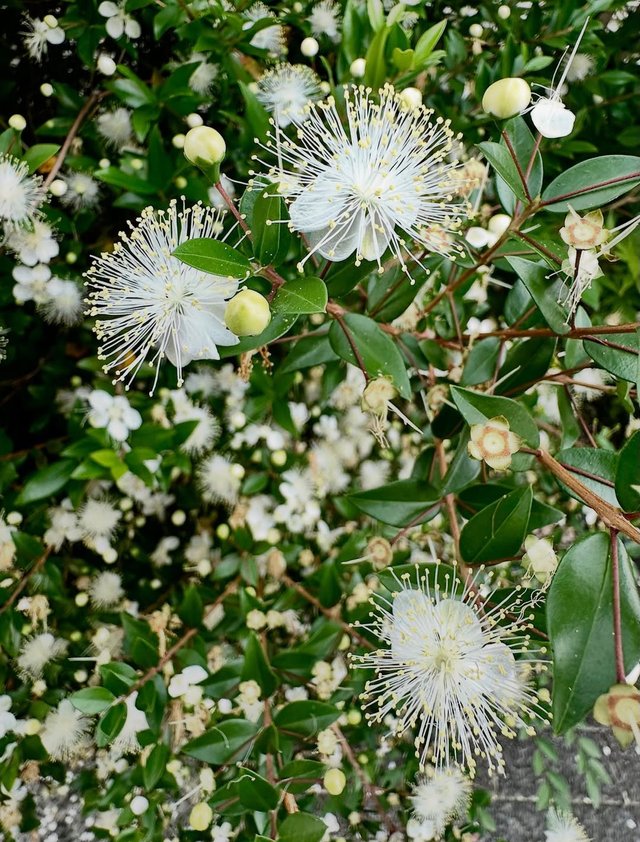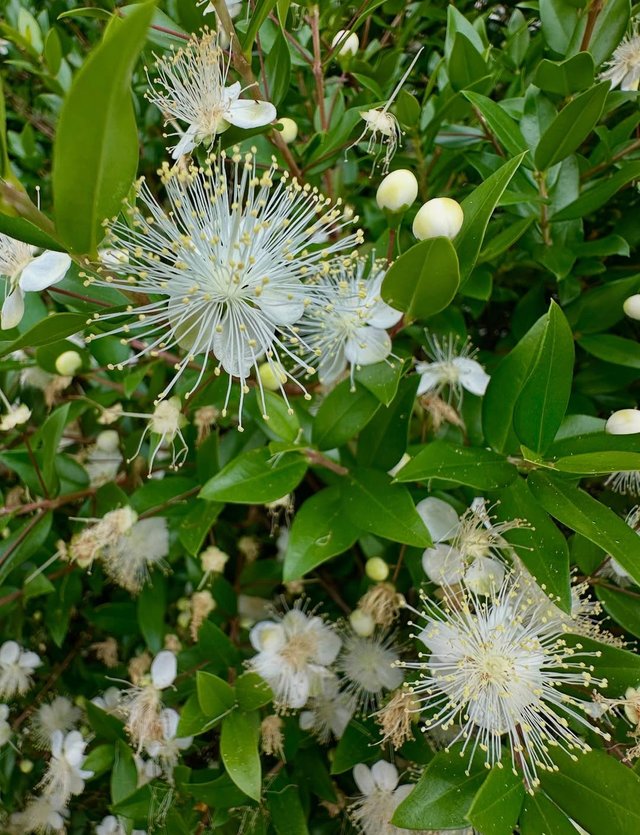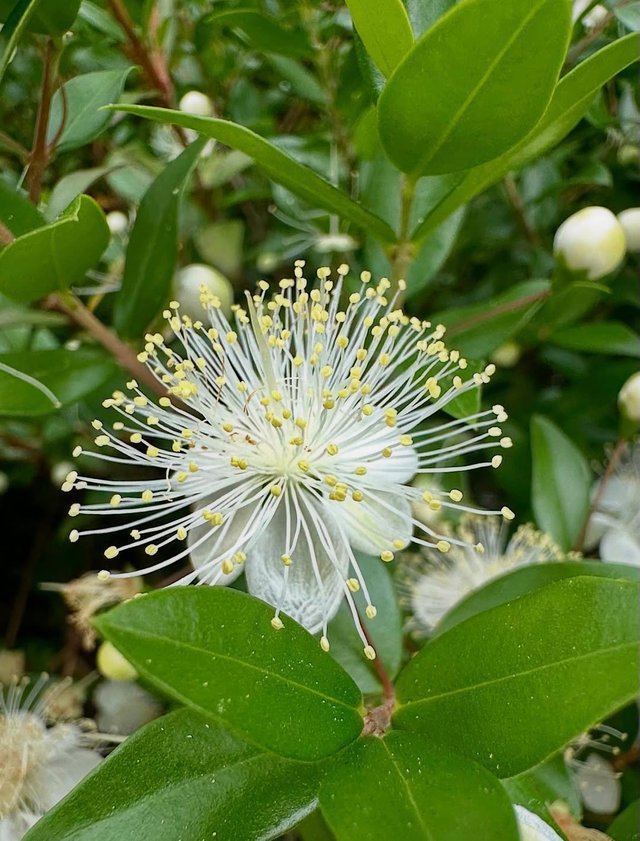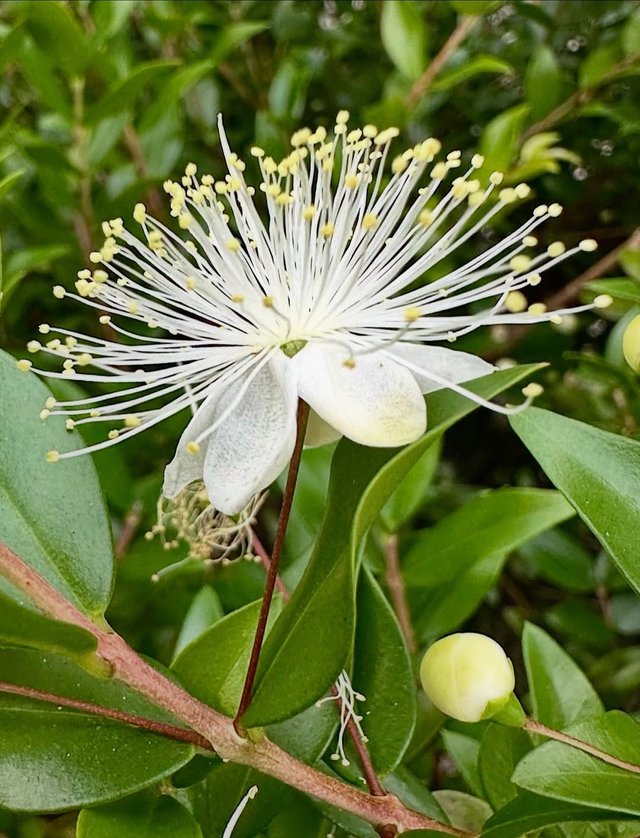Myrtus communis Flower
The Myrtus communis, commonly known as common myrtle, is a beautiful evergreen shrub native to the Mediterranean region. Celebrated since ancient times for both its aromatic beauty and symbolic richness, the myrtle flower holds a cherished place in mythology, medicine, and horticulture. The flowers of Myrtus communis are delicate, fragrant, and enchanting—making them a favorite among gardeners, poets, and herbalists alike.
The flowers of Myrtus communis are star-shaped and typically white, although some cultivars may display tinges of pink or cream. Each flower features a cluster of fine, threadlike stamens that give it a soft, feathery appearance, resembling miniature fireworks in bloom. These stamens are not just ornamental—they're also rich in essential oils that give off a sweet, heady fragrance.The flowering period usually occurs from late spring to summer, depending on the climate. The blooms are followed by small, bluish-black berries, which are also aromatic and sometimes used in cooking or traditional remedies.
The Myrtus communis flower is more than just a pretty bloom—it's a living emblem of love, purity, history, and healing. Whether admired in a garden, used in rituals, or blended into an herbal tonic, it continues to inspire reverence and connection across cultures and generations. In a world full of fleeting trends, the myrtle flower remains a timeless symbol—grounded in nature, yet elevated by human emotion and tradition.




